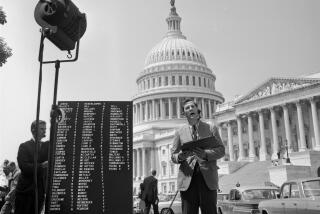Whatâs Behind All the Fireworks
Independence Day. Itâs not just a movie.
Two hundred and twenty years ago today--more or less--the founding fathers thumbed their noses at the âroyal bruteâ King George III and set about setting up a new nation.
But even in an event so historic as this, the truths are not always self-evident. In fact, so much about Americaâs birthday has been embellished over the years that even historians canât agree on whatâs history and whatâs hype.
Hereâs a primer on what really happened. (We think.)
*
Forget the Fourth. America became an independent nation on the Second of July, the Eighth of July, or the Second of August, depending on how you define âbirth of a nation.â
While July 8, 1776, was the date Independence Day was first observed (in Philadelphia with cannons and a nice parade), it was on August 2, 1776, that the Declaration of Independence apparently was signed.
Despite that, John Adams, who not only helped draft the declaration but also was among the original signers, wanted July 2, 1776, to be the date that would go down in history.
âThe second Day of July,â wrote the future president of the future nation in the summer of 1776, âwill be the most memorable day in American history . . . celebrated by succeeding generations with pomp and parade, with shows, games, sports, guns, bells, bonfires and illuminations.â
*
Since the 1790s, Americans have celebrated their independence on the Fourth of July, a day observed as a legal holiday in all 50 states and in the territories . . . and observed with special reverence whenever it falls on a Monday or a Friday, making for a long, three-day weekend sparkling with illuminations.
*
There are conflicting explanations about why Americans celebrate the Fourth. For parade-watchers, the answer is that âFourth-of-Julyâ has a good marching-band cadence. But, from the historical perspective, there are other possible reasons. July 4, 1776, was the date that representatives of 12 (out of 13) Colonies ratified the final version of the Declaration of Independence. It is also the date on which John Hancock, as president of the Continental Congress, and Charles Thomson, as secretary, signed the document.
*
That famous image of the signers all sitting down one afternoon in Philadelphia to affix their John Hancocks (and other names) to the document is a dramatic one and makes a nice illustration for the $2 bill, but itâs as phony as, well, as a $3 bill.
According to University of Virginia history buff Jack D. Warren, fewer than half of the 57 men were around to sign it on the same day. What with summer vacations and no fax machines, it took months to get everybody to sign.
*
It is in the Declaration of Independence that the term âUnited States of Americaâ first appears in print and that some of democracyâs most resonant phrases are expressed: âAll Men are created equal . . . endowed by their Creator with certain unalienable Rights . . . among these, Life, Liberty, and the Pursuit of Happiness,â and âWhenever any Form of Government becomes destructive . . . it is the Right of People to alter or to abolish it. . . . Prudence, indeed, will dictate that Governments long established should not be changed for light and transient Causes. . . . Mankind are more disposed to suffer, while Evils are sufferable, than to right themselves by abolishing the Forms to which they are accustomed.â
*
On the 50th Jubilee anniversary of whatever may have happened on July 4, 1776, both Adams and Jefferson, who spent their public lives opposing one another, died. Unaware that Jefferson also was dying, Adams said on his deathbed: âJefferson still survives.â
And so, Adams might have added, does the Fourth of July.
* Additional Sources: Knowledge Adventure, American Book of Days, World Book Encyclopedia, World Almanac and Book of Facts, Gannett News Service, American University.
More to Read
Sign up for The Wild
Weâll help you find the best places to hike, bike and run, as well as the perfect silent spots for meditation and yoga.
You may occasionally receive promotional content from the Los Angeles Times.






